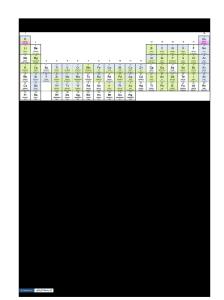Radiation damage studies of nuclear ceramics using the JANNUS-Saclay triple -ion beam irradiation platform
- PDF / 356,858 Bytes
- 14 Pages / 432 x 648 pts Page_size
- 14 Downloads / 319 Views
Radiation damage studies of nuclear ceramics using the JANNUS-Saclay triple -ion beam irradiation platform P. Trocellier1, S. Miro1, Y. Serruys1, É. Bordas1, H. Martin1, N. Chaâbane2, S. Pellegrino2, S. Vaubaillon2 and J.P. Gallien3 1
CEA-DEN/DANS/DMN/SRMP 2 3
INSTN/UEPTN
DSM/IRAMIS/SIS2M
Centre d’Études de Saclay, 91191 Gif sur Yvette, France Abstract The third accelerator of the multi-ion irradiation platform JANNUS (Joint Accelerators for Nanosciences and NUclear Simulation), a 6SDH-2 Pelletron from National Electrostatic Corporation, Middleton was installed at Saclay in October 2009. The first triple beam irradiation combining Fe, He and H ion beams has been performed in March 2010 on a Fe12Cr model ODS alloy. In the first part of this paper, we give a technical description of the triple beam facility. Then, we present its performances and experimental capabilities. Typically, damage dose up to 100 dpa can be reached in 10 hours irradiation with heavy ion beams, with or without simultaneous bombardment by protons, helium-4 ions or any other heavy ion beam. In the second part of this paper, we illustrate some recent experiments relative to advanced nuclear ceramics and composite materials developed in the frame of the Generation IV Forum research program or for fusion applications.
Introduction In the 21st century, nuclear materials have to face a lot of technological challenges, as for example, the increase of the operating life of the reactors from Generations II and III, of the birth of new reactor concepts in the frame of Generation IV initiative and the development of fusion testing machines or spallation facilities. These challenges are mainly linked to stronger damage yields (50 to 100 dpa), higher operating temperature (> 800°C) and larger production of helium and hydrogen (from 1 to several hundreds of appm/dpa) [1]. Any kind of components are concerned: nuclear fuel, cladding alloys, metallic and composite structural materials, coatings, plasma facing, blanket and breeder materials [2]. 153
The mechanisms able to control the evolution of the irradiated materials, and therefore, to modify their thermo-mechanical properties need to be studied more and more precisely. The experimental approach has to be coupled to multiscale modelling calculations [3]. Due to increasing difficulties encountered to multiply neutron irradiation experiments in testing reactors, the simulation of neutron interactions with condensed matter based on the use of energetic ion beams knows a large development [4, 5]. The purpose of this paper is to illustrate the use of the JANNUS multi-ion beam facility to study the irradiation behaviour of some typical ceramics or composite materials considered for future nuclear power applications.
Multi-ion beam facilities In the World Japan hosts three multi-ion beam facilities: a dual beam at Kyoto University [6], a second dual beam at Tokyo University [7] and a triple beam at JAEA Takasaki [8]. Two dual beam facilities are running in Germany at Rossendörf [9] and Jena [10]. IGCAR Kalp
Data Loading...










